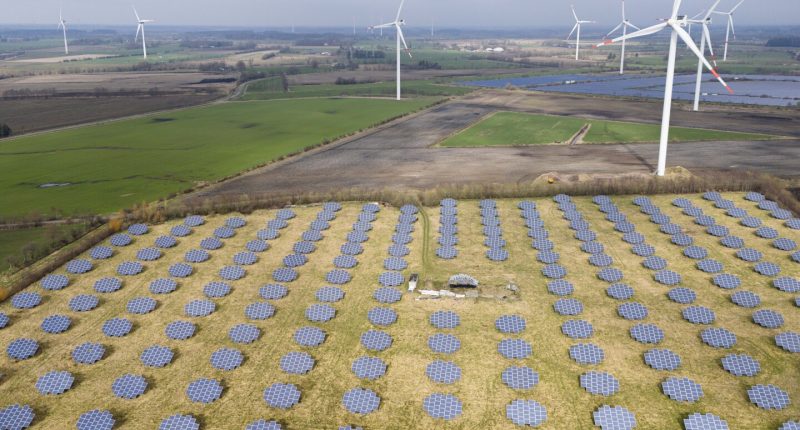The world’s governments have agreed they want to triple renewable energy by 2030, a goal laid out at the U.N. climate summit in December.
But right now, the post-pandemic global economy is throwing up obstacles that will need to be overcome if the goal is going to be met.
Here are the big hurdles to solar, wind and other renewable energy projects:
COSTLY CREDIT
Central banks in Europe and the U.S. have raised interest rates to combat inflation. That hits renewables harder than it does investment in fossil fuel projects.
Renewables have much higher up-front costs to build wind farms, solar arrays and more, and that borrowing costs money. After that, operating costs are negligible since the wind and sun are free, of course — but high interest rates have made it harder to get new projects off the ground.
In many cases, the answer is raising the agreed price of the electricity flowing to the grid to cover the added costs.
INFLATION
Everything costs more these days — not just food and rent, but the electric cables, power turbines, construction materials and services needed to build wind or solar installations. One exception: solar panels have plunged in price due to massive Chinese production.
SNARLED SUPPLY CHAINS
Order backlogs and supply delays are growing because there are shortages of skilled engineers, raw materials and a lack of manufacturing capacity for complex machinery needed for renewable energy projects.
An order for a new wind turbine or a transformer to connect to the grid can take months or longer to arrive than it did before the COVID-19 pandemic.
NOT IN MY BACKYARD
So-called NIMBY syndrome remains an issue in many places. Germany’s southern region of Bavaria, for example, is known for resisting the noise and appearance of wind turbines in its scenic landscape.
Installations have lagged in Bavaria and other regions despite the German government’s push for more renewable energy after losing affordable Russian natural gas used to heat homes, generate electricity and power factories.
WORSE TROUBLES IN DEVELOPING WORLD
Low-income countries have long faced much higher borrowing costs than the richer parts of the globe because government subsidies or other credit guarantees are uncertain.
The result is that the same solar park if built today costs twice as much in Ghana as it would in the U.S. because of interest rates alone, according to Todd Moss, a former State Department official who heads the Energy for Growth Hub in Washington.
Also Read More: World News | Entertainment News | Celebrity News






